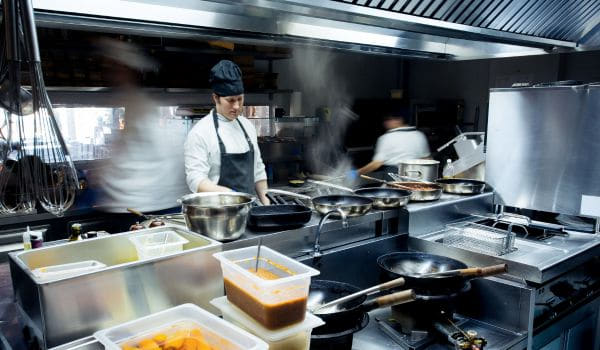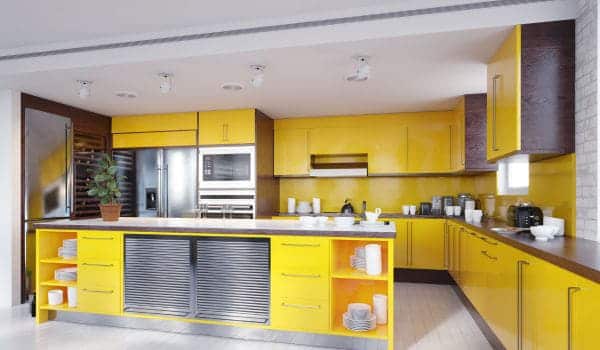In the dynamic setting of a modern kitchen, efficiency, and adaptability are paramount for culinary success. From executive chefs to line cooks, a well-coordinated interplay of diverse roles is crucial. Recognizing the industry’s shifting demands, cross-training becomes indispensable. This strategic approach equips staff to seamlessly navigate various stations, fostering a flexible team capable of overcoming challenges like fluctuating workloads and unforeseen absences.
Chefs and kitchen managers embrace cross-training as a linchpin strategy, enhancing overall functionality and tackling the complexities of the dynamic kitchen environment. In essence, cross-training is the cornerstone, of cultivating a versatile and resilient team to consistently excel amid evolving culinary demands.
Why do chefs in modern kitchens undergo cross-training to work on multiple stations?

Chefs in modern kitchens undergo cross-training to enhance adaptability and efficiency during peak hours. The ability to work across multiple stations ensures a more agile response to fluctuating customer demand. This practice fosters teamwork, reduces bottlenecks, and contributes to a smoother flow of kitchen operations, ultimately improving the overall functionality and service quality.
Main Body

In a contemporary kitchen, the Executive Chef serves as the leader, orchestrating culinary activities with expertise. Collaborating closely is the Sous Chef, overseeing day-to-day operations and staff supervision. Below, Line Cooks specialize in key stations, contributing precision to food preparation. Essential to the team are Cross-trained Staff, embodying versatility to navigate different stations, crucial for operational fluidity amid industry demands.
Cross-training proves multifaceted, enhancing efficiency by optimizing workflow and offering staffing flexibility. It fosters teamwork and communication, creating a collaborative environment to seamlessly cover roles. The process starts by identifying adept individuals, progressing through structured training sessions providing hands-on experience and mentorship. This ongoing cycle ensures adaptability to the dynamic culinary field, promoting individual skill development and career growth. This systematic approach not only shapes a well-rounded and adaptable kitchen team but also propels continuous improvement within the culinary profession.
Chef de Partie
Expertise in a specific kitchen section
Chef de Partie, or station chef, is typically an expert in a specific culinary domain, such as sauces, meat, or pastry. Their specialization ensures a high level of skill and precision in their designated area of responsibility.
Ability to handle other stations when needed
A crucial aspect of cross-training for a Chef de Partie involves the capability to seamlessly transition and perform tasks outside their primary area of expertise. This adaptability not only contributes to the smooth operation of the but also enhances the chef’s overall proficiency and value within the culinary team.
Kitchen Manager
Oversight of kitchen operations
The Kitchen Manager assumes a leadership role, overseeing the day-to-day operations of the kitchen. They are responsible for ensuring that the kitchen runs efficiently, maintaining quality standards, and addressing any operational challenges that may arise.
Skillful in multiple roles for effective management
An effective Kitchen Manager is often cross-trained to handle various roles within the. This includes understanding the intricacies of each station, managing staffing needs, coordinating with suppliers, and addressing any issues that may affect the overall functioning of the kitchen. This multifaceted skill set allows the Manager to provide comprehensive leadership and support to the culinary team. These examples illustrate the significance of cross-training in positions that demand both specialized expertise and the ability to navigate the broader spectrum of kitchen operations. The versatility exhibited by individuals in these roles not only contributes to the overall efficiency but also underscores the importance of adaptability in meeting the challenges of a dynamic culinary environment.
Challenges and Solutions

Balancing Expertise and Versatility
The challenge in balancing expertise and versatility lies in ensuring that individuals, especially those in specialized roles. This can seamlessly transition across different stations without compromising the quality of their work. Specialization is vital for maintaining high standards in specific areas, yet a rigid approach can hinder the fluidity required in a dynamic setting. To address this, a strategic approach involves targeted cross-training that emphasizes the development of additional skills while preserving the mastery of the individual’s primary station. Regular assessments and feedback mechanisms can help strike the right balance, ensuring that versatility enhances rather than diminishes the quality of culinary output.
Addressing Resistance to Change
Resistance to change is a common hurdle when implementing cross-training initiatives in a kitchen. Culinary professionals may be accustomed to the routine and comfort of their specialized roles, viewing cross-training as an imposition on their established expertise. To overcome this, fostering a culture of openness and emphasizing the benefits of cross-training is crucial. Providing a clear rationale, such as career development opportunities and enhanced teamwork, helps individuals see the long-term advantages. Additionally, involving staff in the decision-making process and seeking their input can reduce resistance and foster a sense of ownership in the cross-training program.
Implementing Effective Communication Channels
Effective communication is the lifeblood of any, and implementing channels that facilitate seamless information flow is imperative. Cross-training introduces the need for clear communication regarding scheduling changes, station rotations, and skill development plans. Utilizing digital communication tools, regular team meetings, and training sessions can enhance transparency. Ensure that all team members are informed and aligned. Creating a culture where feedback is welcomed and acted upon also contributes to the continuous improvement of communication channels, fostering a collaborative and adaptable environment.
Conclusion
In the dynamic realm of modern kitchens, challenges like balancing expertise and versatility, resistance to change, and communication dynamics are navigable. Addressing these hurdles transforms them into opportunities for growth and efficiency. Cross-training isn’t just a response to culinary challenges; it’s a strategic investment in team development. Seamless role transitions empower individuals and enhance kitchen cohesiveness. Overcoming resistance necessitates a cultural shift, emphasizing shared benefits and collaboration. Effective communication ensures every team member is informed and aligned with culinary goals. Making this journey one of growth and resilience.





